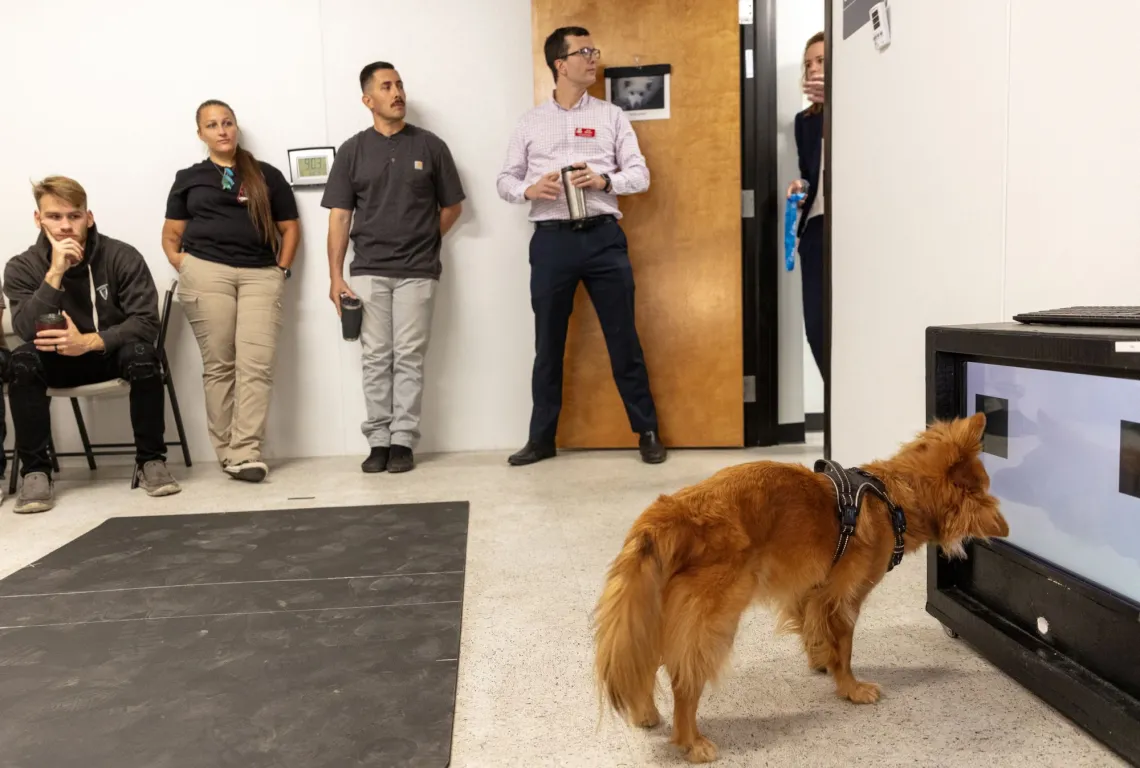University of Arizona and Davis-Monthan Air Force Base innovate for human and canine health

Leslie Hawthorne Klingler
— Tucson, AZ —
The University of Arizona and Davis-Monthan Air Force Base are conducting "handshake" events to foster mutual understanding and pave the way for future partnerships. Nathan Hogan, research associate for Research Development Services’ National Security Program, is coordinating these efforts.
“Teamwork is crucial for success in both academic pursuits and on the battlefield,” said Hogan, who holds a Ph.D and spent more than two decades in the US Air Force and US Army. “What we are doing now is gaining insight into each other's operations and laying the groundwork for joint research and training initiatives.”
One aspect of these efforts revolves around the military’s working dog program. In February 2024, a delegation of 12 veterinary medicine researchers led by Maggie O'Haire, associate dean of the College of Veterinary Medicine, and Evan MacLean, founder and director of the Arizona Canine Cognition Center, visited the military working dogs kennel at Davis-Monthan Air Force Base.
“Military working dogs are critical in so many applications, and we enjoyed learning about the spectrum of capabilities these dogs and their handlers provide,” said MacLean.
O’Haire, whose research team studies service dogs for active and retired service members with post-traumatic stress disorder, said she was impressed by the strong bonds the working dog handlers develop with their animals.
Working dog handlers from Davis-Monthan's 355th Security Forces Squadron have also visited the Arizona Canine Cognition Center on campus. MacLean and his team demonstrated the lab's current experiments, including computer-based tasks in which dogs used their noses to select specific shapes and locations on a touchscreen interface. Another experiment involved creating shifting “mazes” of barriers, which dogs navigated to arrive at a treat.
Another demonstration focused on tracking dogs’ visual attention. In the study, dogs are outfitted with goggles equipped with miniature lightweight cameras that track the animal’s field of vision and eye movements to determine a precise focal point. The military dog handlers believe such a study could help them understand canine behavior when working in complex environments.
“We look forward to continuing to learn from one another and identifying ways to conduct strong science that enhances the human-animal bond as well as both human and canine wellbeing,” said O’Haire.
In addition to interest in canine cooperation, the 68th Rescue Squadron at Davis-Monthan hosted representatives from the University of Arizona Health Sciences, including from the Arizona Simulation Technology and Education Center (ASTEC). The visit was a unique opportunity for U of A staff and faculty to observe training exercises in point-of-injury care and combat rescue procedures, providing a new perspective on equipment and processes used at the forward edge of battlefield medical care. Both military and academic groups expressed interest in developing training simulation environments for the 355th Medical Group.
These initial interactions have encouraged RDS staff to continue their efforts to combine local military and academic expertise. Hogan underscored the potential of a premier research institution with multiple military installations nearby. Collaboration, he said, will benefit more than the immediate goals we set.

